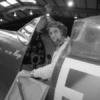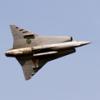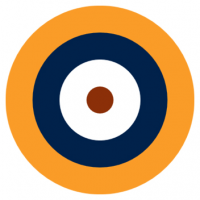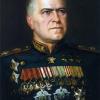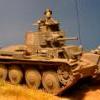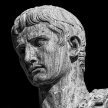Leaderboard
Popular Content
Showing content with the highest reputation on 22/06/21 in all areas
-
Evening all, It's been a while since I finished a model, so time to put that right with the latest off the bench, the Hobby 2000 boxing of the superb Hasegawa F-111F. Not a trouble free build- I had some issues getting all the internals to remain in place when joining the fuselage halves together- but overall a very pleasing kit to build. It certainly looks the part with the flaps and slats drooped. The decals are by Cartograf and performed flawlessly- I opted for the boss bird option to provide a colourful addition to my RAF Lakenheath theme I'm currently working through. I added a pair of AIM-9Js from a Hasegawa weapons set whilst the LGBs and ECM Pod are courtesy of Eduard Brassin. Finished as always using Hataka Orange Line and Alclad lacquers. Hobby 2000 (Hasegawa) 1/72 General Dynamics F-111F by Shaun Schofield, on Flickr Hobby 2000 (Hasegawa) 1/72 General Dynamics F-111F by Shaun Schofield, on Flickr Hobby 2000 (Hasegawa) 1/72 General Dynamics F-111F by Shaun Schofield, on Flickr Hobby 2000 (Hasegawa) 1/72 General Dynamics F-111F by Shaun Schofield, on Flickr Hobby 2000 (Hasegawa) 1/72 General Dynamics F-111F by Shaun Schofield, on Flickr Thanks for looking, comments welcomed as always Shaun33 points
-
Calling this one done - the new 1:48 Airfix Sabre in the boxed 4 Squadron option. Straps were stolen from an old Eduard F86 set I forgot I had. Paints were all airbrushed Humbrol Enamels, weathering was a mixture of dry brushing, a Flory black wash and Tamiya weathering pastels. Left the tanks off this one to show the lines of the airframe better. Loved the kit and build so much another two are on the bench plus a shed load of the new Eduard sets - 3 and another 4 Squadron machine next. Quite happy for any comments good or bad - hope it’s of interest.27 points
-
Hello again! I have no passion for Hawker Hurricane, but I know what it did in the war and so... But I will never do another one from Airfix. I know that many Brits have nothing but praise for the new Airfix, but for me they are just an average (and sometimes below average) plastic kit producer that still hasn't got what it takes (egg shell surface, soft plastic with soft details, thick wing thrailing edge, too deep panel lines etc...). I mean, Hasegawa kits from 1990s are sharper and better looking models than this one from the 21st century! But I like the sturdy box and the decals. The price, not so much. This one is OOB. AK RAF acrylic paints were used and some dry pastels. The original airplane had that bulbous spiner that I wasn't really happy with , so I had it replaced with the satndard one. The shinny paint spots on the fuselage are supposed to represent the patches on the canvas due to the battle damage. Enjoy the pics! Josip19 points
-
Greetings Just finished a 1/144 Jet and thought I would give my eyes a break. his was a fun build and I did make a few of the suggested corrections. Barracuda Resin for the underside radiators. Eduard Photo etch Interior items( Just to lazy to paint the Instrument panel. Miliput Seat back cushion. Brass wire inserted into main gear where the upper and center section joined..(Not the best engineering design in my Opinion). Still a very economical build. Uschi Line for IFF antennas no line for upper radio..I think this is correct for Mk IIa in 1941. This aircraft represents Spitfire flown by Witold Urbanowicz in April of 1941. I am a huge "Kościuszko" Squadron fan and this is a good representative of that squadron. This was the 303 Sq during WW II in Britain. I used Gunze colors for paint and Mr Hobby GX 100 clear coat for decal surface and Testors Dullcoat for final finish. The markings are a combination of kit national markings, which were fantastic, and Kagaro letters and Kościuszko emblem from the "Battle of Britain" photo pamphlet. I really can't say enough about how nice the kit decals performed. Fun Build Thanks for Looking Comments always welcome Bill18 points
-
we have some rigging... we have leather patches... we have wing struts... we have WINGS!! home flippin straight now boys TTFN Peter18 points
-
Hello, It is time to show the last completed model - British MBT Chellenger 2 TES. I only bought tow cables from eureka and Anti - Slip from Mig. I didn't do too many modifications as the RFM kit is quite accurate. I hope you will like it. Feel free to rate and comment. Work in progress section here.16 points
-
The last operator of the Republic F-105G Thunderchief was the Georgia Air National Guard 128th TFS / 116th TFW based at Dobbins AFB in Marietta, GA. They took on the 'Wild Weasel' SAM killing mission that had originally started during the Vietnam War and kept the F-105G until the summer of 1983 when the venerable 'Thuds' were traded in for the F-4D Phantom. Several of the aircraft were painted in a wrap-around SEA camouflage scheme and I decided to take an old 1/48th Revell / Monogram F-105G kit out of the stash and finish it in this colour scheme, courtesy of a recently released Caracal Models decal sheet. It wasn't an easy build (more later) however the end result looks like this:- 20210620_133806 by Ghostbase, on Flickr The kit itself is excellent, way up there with the other Monogram 'Century Series' aircraft kits, and I was surprised with how well it went together. Very little filler was needed and in fact I was able to attach the complete wing sections to the fuselage after they had been painted. The Thunderchief was a huge aircraft and that really shows in this kit which measures 44cm x 22cm. 20210620_132826 by Ghostbase, on Flickr I used the weapons supplied with the kit, these being a pair of AGM-45 Shrike air-to-ground anti-radiation missiles that locked on and homed onto ground based tracking and fire-control radars, as well as a single AGM_78 Standard which is a passive anti-radiation missile with a range of 24 km. 20210620_132928 by Ghostbase, on Flickr The challenge lay in the painting of this huge kit. I used the Hataka Hobby USAF Paint Set (Vietnam War Era) #AS-09 and initially I started with applying the tan paint, it applied very well and the colour looked correct as well as the satin finish. However the two greens consistently clogged up my H&S Ultra airbrush and when they did spray the finish was splotchy and uneven. When I oversprayed a previously applied coat the paint would sort of atomise into its constituent parts! To cut a long story short I found that a replacement medium nozzle and needle on my airbrush worked wonders as did using a retarder as well as less thinner. The end result turned out ok anyway. 20210620_132556 by Ghostbase, on Flickr The decals come from the recent Caracal Models CD48143 F-105F/G "Wild Weasels" sheet which is well-researched and the decals are of a very high quality. As soon as I saw this sheet I knew I wanted to make this aircraft. 20210620_133106 by Ghostbase, on Flickr I am reasonably happy with the final result. It is a very large and impressive model and despite the painting heartache it looks good. Next time I might just add some wash to the major panel lines, also use a darker exhaust colour on the afterburner petals. Michael 20210620_132614 by Ghostbase, on Flickr 20210620_133219 by Ghostbase, on Flickr14 points
-
This is the latest Spitfire offering from Tamiya and is probably their best aircraft kit to date IMHO. The kit goes together very easily (as might be expected) and has some nice details, but considering that a pilot is included there isn’t an option to display the model ‘wheels up’. Unfortunately some careful cutting and fettling is required as frustratingly the wheel bays aren’t deep enough to accommodate the wheels ‘up’. Because of this the wheels need to be reduced to nearly half their thickness before the undercarriage doors will sit flush. The chrome metal stand is made by Geminijets and it’s only required to drill a suitable sized hole in the wing thus enabling the Spit to be safely mounted. Paints are Tamiya acrylics, various oils and final Matt varnish are Newton & Windsor, and the 3 aerial wires are Uschi van der Rosten thread. Overall I’m pretty pleased with the final result, but I’ve since realised that maybe the oleos needed extending slightly as they are probably moulded in a ‘weight on wheels’ guise.14 points
-
This is the ICM kit of the Cessna O2 in 32nd scale. A nicely detailed kit moulded in soft plastic. You get a nicely detailed cockpit, I added some after market seat belts & decals for the instrument panel. Also a couple of M-16 rifles. The kit has you fit four seats in the cockpit, but in this role only the two front ones are needed. There are a few fit issues, nothing major. The biggest let down is the decals. Poorly printed, pixilated, incorrect spellings, such as "RESQUE". I used the AOA set which is superb. You get sufficient decals to mark up two models. No stencil data for the weapons though. Painted with Tamiya acrylics & Xtracolor enamels. Thanks for looking Angelo11 points
-
I’m calling it done! Radio wires and canopy wire were put in place with EZ line, painted gunmetal and then some PVA blobs for the insulators(?) I really enjoyed building this kit and really recommend it - the only additions to the weekend boxing were Montex canopy masks and an Eduard Look set with an IP and belts. Time to throw another 109 into the group build I think! Thanks to everyone for watching and thanks especially to @Col. @Corsairfoxfouruncle @vppelt68 and @Enzo Matrix for making it happen. I’ll stick it in the gallery soon. Steve10 points
-
I struggled to find a creative way to display the interior of this one. Then i thought why not make 2 dios in one (well 3 😁) so half is portrayed how it would potentially look back in 1918 and half in how it would look preserved as a museum exibit. Its a great kit, a long one so i broke it up with other builds but if youve got the will to tackle it id highly recommend it.9 points
-
I was chatting to @general melchett the other day and the subject of the old Inpact kits based on the film "Those Magnificent Men In Their Flying Machines" came up. The film follows the adventures of a number of competitors in the 1910 London to Paris air race. The race is fictional but is closely based on the 1910 Daily Mail London to Manchester race. Our beloved General became quite nostalgic and misty eyed as he recalled how, as a newly commissioned General, in early middle age, he followed every aspect of the race. He even recalled how Baldrick, carried away by events, entered the race, strapped a pair of wings made from the feathers of the oozlem bird to his elbows (or was it his rear end? You can never be sure with Baldrick.), swallowed several cans of curried baked beans, along with ten pints of his Old Scrotum beer and took of for Manchester. What happened next is a bit confused but it would seem that there were a series of loud and very smelly explosions, Baldrick shot up in the air, disappeared up his own backside, much in the manner of the aforementioned bird and was next seen climbing out of the sewage farm adjacent to Brooklands. By all accounts he smelt better for his unscheduled dunking. Doubtless the General who was present at the time, can provide us with a more detailed explanation as to what occurred. The upshot of all this was that I ended up tracking down a Pyro boxing of the Inpact Boxkite, along with some Gaspatch spoked wheels and a Small Stuff engine. I built this kit about twenty or so years ago and thoroughly enjoyed it and it will be interesting to see what I can do with it all these years later. It is good job that I quite like doing rigging! I think the first jobs will be to lose the overdone fabric effect on the flying surfaces and to fill a number of ejector pin marks that are very prominent. It will then be time to start drilling dozens of tiny holes to take the actual rigging. More of which later. I'm not too sure how much I will get done before the weekend as I have a very full on few days with MVS duties but I am very much looking forward to this build. Thanks for looking. Martian 👽9 points
-
Bf 109G-4 R6 Trop Oblt Frank Schiehs CO 8/ JG 53 Tindja, Tunisia April 1943 1/48 Eduard Bf-109 G4 Weekend Edition The build thread is in the link below.9 points
-
WIP is there: The pics: The Galaxy masks for the canopy, panels, missiles and engine area are extremely helpful. If you intend to build a GWH or Minibase Flanker, get some. The Galaxy masks for the digital camouflage are extremely cleverly designed, and almost idiot proof (I know, I used them). From what I saw, their design is better than the Foxbot ones. While we're talking Foxbot stuff, their decals are excellent. I used them rather than Galaxy and GWH ones when I could. MRP paints are as usual, ie excellent. The kit is one of the best designed kits I've ever seen. Can't wait for the next GWH Flankers (the Flanker B is on its way). Cheers, S.8 points
-
Here is the PAS Models resin ATR 42 in the livery of Air Wales circa 2005. It’s a sort of therapy model, a quick, easy build to try to restore my mojo after a whole run of failed and stalled projects had left me totally “scunnered” (as we say in Scotland) and with serious thoughts of quitting the hobby. The idea was suggested by my wife and I'm very grateful for her interest and encouragement during what has been a depressing and unproductive period on the modelling front. The build was straightforward, problem-free and largely OOB. Some of the panel lines were, putting it politely, rough and ready and Mr Surfacer 500 dealt with the worst. The undercarriage is chunky and not 100% accurate but it’s robust and easy to assemble so I left well alone. I added the small doors above the main undercarriage doors from plastic sheet since there is nothing in the kit to represent them. The kit is for the ATR 42-500 and the Air Wales fleet were all early -300s which meant replacing the six blade props with metal four blade ones and adding the “double chin” intakes on the engines. Painting couldn’t have been easier - overall Halfords white. Decals are by Classic Airlines with a few additions from other sources mainly the kit sheet and leftovers from a Nazca detail sheet. Classic Airlines only provide one registration - G-TAWE. After Air Wales collapsed G-TAWE went to Venezuelan carrier Conviasa in whose hands it crashed with multiple fatalities. I have a thing about not modelling airliners in which people have died so I changed the registration to G-CDFF which is still happily trundling around the skies of Canada. Has building the little ATR helped my mojo? My honest answer is I’m not sure but I hope so. Building a model from opening the box to posting in RFI in under four weeks is “blitzbuild” territory for me. My wife's interest helped to keep me motivated and finishing it has definitely felt good. I’ve decided to make a concentrated effort to complete at least three of the stalled models and I’ll see what happens after that. Thanks for looking and as always comments and constructive criticism are welcome. Dave G8 points
-
is that lawyer-speak for making it up as I go along? Not a problem at all Bill. I know that when you speak up it's for good reason. I agree that in some cases, the drawings are very suspect, and the drawing greeblies in many cases do not match up with photographic evidence. Regarding the expectant carbuncle on the undersides: As you know, helicopters are not normally known for their affectionate nature, however, this one in Hong Kong, and I believe a 28 Sqn offspring, decided to roll over for a tummy rub by Alphonso the umbrella carrying rigger. Even though the photo is not of the best quality, you can still see that the bulge is not rectangular, having angled/tapered and rounded ends. The taper is nowhere near as sharp as depicted on the drawings tho' and I took that into account when shaping the carbuncle. Any idea what the black hole adjacent to the stbd front undercarriage leg is? The best photos I've found so far appear to show some kind of tubular (pipe?) protruding from the hole thanks Pete. You're just trying to entice Ced back in here aren't you? The alclad I have is in the 4oz plastic bottle. I'm definitely going off Alclad as I am convinced they have some serious quality control issues. I may have to look at alternative primers very soon. Got a link Richie? I'd love to see some of this great modeling you talk about (thanks btw)8 points
-
Thanks Mark A bit more progress Engine on Travelair completed, all fitted together perfectly , this is the rear. Front Engine is a push fit into front of fuselage and again fit is great Cowling is again a push fit and goes on very well Underside of the Firefly completed too, u/C bays edges all tidied can now start painting the camouflage now. Thanks for looking Chris8 points
-
8 points
-
@Stickframe Hi Nick, That looks like an Apollo 500GT, an obscure car with Italian styling and American V8 power. It was made (in)famous as the Thorndyke Special in the Disney film, The Love Bug. It used the Aluminium Buick V8 that is more well know in in Britain as the Rover V8. Some Wikipedia info here.8 points
-
Good day sunshine! here is the last of the Finnish Gallery. The famous "Mersu" flown by the great E. Luukkanen with the 2/LeLv.34 in March 4", and then flown by H.Wind with the 3/HLeLv 24,MT-201 is credited with 32,5 victories. Many thanks to those who followed this gallery and allowed me to show you my Finnish models! DSC_0011-35 by jean Barby, sur Flickr DSC_0009-43 by jean Barby, sur Flickr DSC_0008-56 by jean Barby, sur Flickr DSC_0007-60 by jean Barby, sur Flickr DSC_0006-67 by jean Barby, sur Flickr DSC_0005-74 by jean Barby, sur Flickr DSC_0004-85 by jean Barby, sur Flickr DSC_0003-81 by jean Barby, sur Flickr DSC_0002-80 by jean Barby, sur Flickr DSC_0001-80 by jean Barby, sur Flickr7 points
-
While not perfected, my fine line airbrushing is improving... --John7 points
-
Ooh yes! More kite than box, I’d say - but 100% respect for anyone who got airborne in anything like that. And who builds one, obvs. I believe this rare photo shows Baldrick during an early test of the Sailor-Strides version of the system you describe:7 points
-
Thanks Craig. It’s a good choice by Eduard I think - just a little different from the norm 😎 I think I’m pretty much done now. Everything attached tonight, some fun with pigments and pastels and I think I’ll call it a day. The final thing now is the canopy restraint wire and the radio wires which I’ll try to do tomorrow. It’s such a nice kit to build. Some phots tonight of the finished article - I’ll get some better ones in daylight once the rigging is done. Thanks everyone for all the positive comments and advice with this one. Steve7 points
-
A JG51 yellow nosed 109 from the battle of britain, piloted by captain pips priller -yellow 1 . its the very nice az 1/72 kit oob, Some pictures Pips prillers Yellow nose number 1 is my choice Beautifully molded I've made a start, a snip of a build, in fact it went together in a flash Rlm 02 in the cockpit and a dry brush, and wash Oob seat belt decals look surprisingly good, the only canopy option in the kit is a closed one piece affair, so l didn't think aftermarket would bring anything to this party Got the wing on , superb fit Also ive drilled out the exausts And finally primed , and the canopy masked, pink primer next for the yellow tail and nose6 points
-
I thought that I was being clever buying this for its size/cost ratio as something to practise on, but I see that I'm not the first to have this idea! I'm just going for a quick build so that I have something to try things like hairspray chipping on, and it certainly goes together quickly. Two empty sprues on day 1 must be a record for me. I have at least closed up the underside of the hull to stop daylight showing through the engine deck grilles. I've seen someone else on here stick a picture of the radiators and engine under the grilles, so I might try something similar. Up until now my son has only seen my Panzer I/II/III builds, so he was immediately impressed and declared it 'the best one', it certainly is imposing compared to them (but I still prefer the silly little ones). I built one of these 40 years ago and remember it being the first kit that I was really pleased with afterwards, so we'll see how this goes. I'll give it to him when it's finished because it doesn't fit in with anything else - the gun barrel alone is the same length as a Panzer I. Wasn't going to do a WIP, but I might have some questions for you all when I get my hairspray out6 points
-
Hi, The Stranraer (original Matchbox production) was a kit waiting for many years in my stash. It is about 30 years now. The main reason was the complicate riging and some conversion needed to do as the kit is reproducing some post war changes. I decided to do her in RCAF livery (and machine of Canadian build), and I am very grateful to all BM fellows who took part in a topic providing many useful information on those differences. First of all I thanks Chris ( @dogsbody ). This thread is here: So, the list of modificarions are: 1. removing of carago doors on right side and add additional window 2. cut out the place for cockpit window to move back on right side 3. 4 blades props 4. The a bit reshaped cowlings 5. Fairing of the rear gunner position 6. Browning MGs, and doubled in mid upper site. 7. DF loop control rod between wings 8. Bombs bays for 20 lb bombs and bombs racks under the wings More corrections are landing and positioning lights, pitot tube, some rivets on surface (very delicate, almost invisible, unfortunately) and bombs (20 lb stolen from Airfix Swordfish, bomb chargies scratch bulid) and driving mechanism of ailerons on the bottom side of wings. I done riging by EZ. The scheme presents machine from 117 Squadron (BR) RCAF. The story of this particular machine is described here http://www.rwrwalker.ca/RCAF_901_950_detailed.htm as "With No. 117 (BR) Squadron, RCAF Stations Sydney, Dartmouth, Bella Bella, BC, and Jericho Beach, BC August 1941 to March 1944, in camouflage, last date: 8 March 1944 - Struck off". Here she is: An undersides (sorry for wide angle distortion) Comments welcome Regards J-W6 points
-
Hiya Folks, You can probably guess that I am a fan of the Beaufort,..... well the Australian DAP built variant has been high up on my list of models to build and thanks to Uncle Les Conversions in Australia, I was able to have a go at building one using the excellent Airfix kit as a basis. As well as the conversion set I used photo etched ASV antennae from High Planes Models, who are also releasing a conversion set of their own for the DAP built Aussie variant,..... plus a set of resin treaded early Beaufighter wheels from Barracuda and the decals were a mixture of Special Hobby and Encore kit decals. The model was brush painted and here is the WIP; The Aircraft I chose to depict was 139 mission veteran A9-486, `Scotty`s Homin Pidgin' of 100 Sqn RAAF based in New Guienea which was coded QH-M and later QH-J, seen here;. And here is the model; Cheers Tony6 points
-
Thanks all. I prefer masks and spraying pennant numbers nowadays but sadly there's a limit to the size that masks will go to so it's decals, ensuring that you apply over a very smooth "Klear" sprayed surface They settled without any fuss or film - phew! And so - straight onto Weathering AFTER the decals had had a further Klear spray to seal them. This now comprises the extent of my weathering products In fact there were 4 oils: 1) Industrial earth ( major oil) Mig Abteilung 2) Faded white Mig Abteilung 3) Smoke black AK 4) Dark Grey shadow AK As previously I tend to dry brush with very small amounts of oil most of which has been wiped off or swiped onto paper and repeatedly brush. The majority f what you see is Industrial earth. I then sit, ponder and keep coming bacl oveer several hours to remove or add. You can remove it if you wish with a brush or cotton bud damped with white spirit. Drying time is 24 hrs + so you have a lot of time to change your mind. Pics show these vessels were really quite grubby As you can see the Castle steps were added and the Castle stuck down. It's time tostart adding all the deck furniture and here's the layout plans The railings weree a perfect fit and finally the mast was stepped The braces fitted and then the mast furniture to complete. It really is very detailed More soon - finishing line in sight Thanks for looking Rob6 points
-
Lat night trouble was had trying in vain to get the fuselage to close. Various bit bent and broke and so this morning I tried a different tack. The fuselage was fitted around the bits that were still intact then the non fitting/broken parts were trimmed and manipulated into place, or as close as I could get them. The results are below. The trick with nipping the moulded fitting lug from the fabric sides worked though. A smear of PPP should cover up the join line. It's all getting left for everything to cure in place and then I'll have a look at what needs done to hide the damage. Most of it is under the canopy so that's a bonus. In other news, Thanks to @2996 Victor for the heads up. This has just arrived. It's just gone to the top of the pile. Cheers, Alistair6 points
-
Managed to get the yellow done last night , also the assembly is now complete,and yellow masked , so i reckon I'll do the undersides tonight6 points
-
Special thanks to Craig @modelling minion who pointed out I had not removed the quarter panel masking. Now corrected Ray6 points
-
WIP here: Thanks to all who contributed, commented and "liked" the WIP Rob5 points
-
When I get the Blenheim and a Hurricane I'm doing nearly done here's what I'll be doing next. I have already done a Mk.II using this conversion kit and it went without a hitch. Not sure about the Dihedral Tail-plane shown in the drawing for the colour scheme, pretty certain it would have been a flat tail-plane. The only (fuzzy) photo of this aircraft I have come across on the 'net has the tail cut-off! If anyone has the book mentioned in the details, 'Fighter Squadrons of the RAF, John Rawlings, Crecy books and can verify this I'd be most grateful. Davey. Previous build.5 points
-
I am happy to be able to participate in this STGB, thanks to those who proposed it and to those who manage it The Grumman Hellcat is one of my favorite WWII planes, I have already made 5 in 1/72 scale (3x Academy, 1x Italeri and 1x Eduard) and 2 in 1/48 scale (both Eduard) and I have at least as many to do. Of all of them, this is my first night fighter. The model is the 1/72 scale from Eduard, the subject is expected to be BuNo 78669 based in Okinawa , May 1945 as an aftermarket I will use resin wheels and maybe even the engine5 points
-
The all white livery of the Polish national airline LOT brings out very well the elegant contours of the Tupolev Tu-134A. This jet in various East European liveries was a very familiar sight at European airports in the 1960's and 70's. In my mind The TU-134 was one of the best looking Soviet manufactured airliners. I built the model from an excellent, tamigawa quality 1/144 scale Zvezda kit. The livery decals were a combination of various sets: Avia Decals, F-DCAL and the very genuine looking, three dimensional glass nose cone decal from Ascensio. The cabin windows, the windscreen and the nose cone of the kit were open so I had to putty and sand them closed. I sprayed the plane with white Tamiya fine surface primer which I then covered with Tamiya clear gloss varnish. The metal areas are Alclad Polished aluminium. Humbrol and Vallejo colours were also applied to smaller details.5 points
-
Wartime pic, taken in Italy by an American, (on of the shuttle bombing trips, the Yak-9DD were escorts) possibly the only circulating wartime colour image? the planes look new, AMT-12, when new, is dark blue grey, AMT-11 is mid grey, as well as AMT-7 being really blue, the sliver star outline is also of note. Compare with the preserved Yak-3 above. HTH5 points
-
This is the French Yak 3 stripped back to the original paint, AMT 7, AMT 11 and AMT 12. Cheers Dennis5 points
-
5 points
-
So that's where we left Alphonso. I wonder if he's still waiting.... Ref the black hole, The Wessex had a couple of round fibreglass access panels on the belly IIRC. Access to fuel system pipework I think. Yours seems not to have the underside colour up to it's edges, as if a panel has been removed. Could this picture be later in the day, after everything has been switched off and drained while they waited for a crane? And, did it trip over that yellow chock? I never did like those springloaded metal chocks, they could bite! As for @CedB, He's been very quiet of late. Could be he's plotting something....5 points
-
The GB is getting closer. And after searching among the French subjects in my stash, I have decided to go for these two. You wanted French subjects. I will give you EXTREMELY French subjects!5 points
-
Wow that's an excellent photo. It shows a host of small details that I could barely make out on other images. Based on that pic, I've got a bit of deconstruction to do before I can move forward. I was aware of the slats on the inside part of the trolley and had seen a picture of the aircraft being pushed into the water, and the trolley was filled with what appeared to be stone blocks as ballast. I guessed wrong as to the number of slats though, as the picture shows 10 and I only have 7. I'll have to cut them off and try again but that's no biggie. Some slightly fatter tyres got made last night. I've been using one of the dummy floats to test the "sit" as well. It looks like my supports are a bit too high and need to come down by about .8mm or slightly more. Getting there though. Edit: Just found this one via your link Mike 😮5 points
-
Thanks, Ray. I also enjoyed building Airfix's classic cars, and their modern (1960s-70s!) ones too. The imminent arrival of the "Vintage Classics" Beach Buggy has rekindled my interest. I'll have to have one! Anyroadup, back to this car. It's now FINISHED! More pix in the gallery shortly!5 points
-
The windshield only needs very little filling and sanding to sit proper in it´s place. Last little gaps were filled with Mr.Surfacer 1000. Modelcollect didn´t pay any attention to the refueling receptacle and the plate whiche closes the little overhead window on the B-52G and -H. It´s done, next will be the main fuselage, bomb bay and wheel wells. Greetings from very hot🥵 Austria.5 points
-
1/72 Special Hobby HA-1112 M-1L 'Buchon' OOB, kit decals, Vallejo ModelAir paint, 'Klear' Gloss and Vallejo Matt varnishes. Get her cheeky grin!5 points
-
Hello again! This is my redention of one of Hasegawa's best bomber kits so far. I think it came out pretty good, but that French guy who had also posted his model here, did it better. Aftermarket decals only, the rest iz OOB. It was painted with Revell and Vallejo acrylics. I believe there was also some moderate use of artist oil paints. The kit hardly needs any aftermarket additions, but the main wheels could be better. Therefore I would reccomend to get it in Eduard boxing. Enjoy the pics! Josip4 points
-
On that model, the AMT-12 Dark Grey looks good for faded AMT-12, but that AMT-11 is much too blue. Although the Soviets referred to it as 'Grey-Blue', it was really more of a medium grey colour, as Troy mentions above. I have read from some sources that AMT-12 Dark Grey was very dark when new - almost black (the colour it was replacing on fighters was AMT-6 Black). Regards, Jason4 points
-
Update - similar progress to the other weekend edition E3 - managed to take some tips from Ray in build sequence in this one, mainly with the IP's and I drilled the pedals out! Still to finish the painting of the cockpit sidewalls and decals for the IP's. Just got to get over the fear of closing it all up! 😀4 points
-
Hello everyone, I have made a bit of progress on the engine, some of which I am pleased with, other bits not so much. Here is the engine as it currently stands: I have mainly been working on the wiring; getting the HT leads in place was exceptionally difficult, and I had to start over a couple of times after bad initial attempts. I'm not entirely pleased with how they look right now. They don't look terrible from a distance, but closer up: They look a bit of a mess. The leads coming out of the distributors look worse, I think, than those going from the tube to the engine block. Part of this can be remedied with some clean-up (which I haven't done yet, as evidenced by the gunk on that right distributor and on the wires), but part of me wants to rip the leads out and start over. They are from the MFH box, and are .6 mm wrapped wire. Is there any easier type of cording or wire to use for this sort of thing? The rigidity of the wire made it more difficult, it seemed to me, rather than less. Honestly, I struggled with this part of the build; it was the most difficult part for me so far, by a wide margin. Any advice on how to do this better would be greatly appreciated. I needed a break from engine work after that, so I have just begun the intricate process of making the Borrani wire wheels: These should prove stress-free... (ha).4 points
-
I`ll try to copy and paste the Key Archive page,......Hope this copies OK ( EDIT,....not bad,.... but the photos didn`t transfer,....pity,..... I`ve added the main ones of interest); The question has gone unanswered for years: did RAF Canberra PR9s fly from Chilean bases during the Falklands War? Operation ‘Folklore’ was the codename given to a planned deployment — but, despite its eventual cancellation, rumours still abound. For his new book Harrier 809, author Rowland White talked to some of those involved, and researched in official archives, to investigate one of British military aviation’s most enduring mysteries For Operation ‘Folklore’, RAF Canberra PR9s deployed to Belize in anticipation of performing reconnaissance missions over the South Atlantic. The plan called for them to fly to northern Chile, land on a stretch of the Pan-American Highway at dawn, refuel from a waiting C-130, then continue on to Punta Arenas. COLIN ADAMS Gp the Capt radio Colin on as Adams he got had ready for work, the Today programme a regular companion to his morning routine. After 20 years as a front-line pilot in the RAF he was now finally, and permanently, flying a desk. A varied and exotic career that had seen him deploy around the globe from South America to East Africa, and from Europe’s arctic north to the South China Sea, had given way to a posting to RAF Innsworth in Gloucester, at what was, in effect, the air force’s human resources department, responsible for every aspect of ‘light blue’ personnel and career management. It didn’t, admittedly, have the same appeal as evading enemy MiGs in the skies over Indonesia, but he’d had a good innings in the cockpit, and more fun than most. PR9 XH173 of No 39 Squadron shows its hinged nosecone on the apron at Wyton. This aircraft later became serial 343 with the Chilean Air Force. DENIS J. CALVERT Radio 4’s familiar mix of news, views and interviews was usually little more than a soundtrack. Background to breakfast. But this morning it had his full attention. On the hour, the news bulletin led with a report that the New Statesman magazine had just published an article, ‘The Chile Connection’, claiming that, three years earlier, “at least” six Canberra PR9s from No 39 Squadron at RAF Wyton near Huntingdon had deployed on operations to Punta Arenas in southern Chile during the Falklands War. At the time, Colin Adams had been 39’s commanding officer. An hour later, at RAF Rudloe Manor near Bath, he took a telephone call from a group captain in the RAF Police who told him, “I’ve been instructed to come and see you immediately”. After arriving at the 17th century manor house, beneath which a network of underground bunkers had long provided a home to RAF intelligence activity, the senior RAFP officer was ushered in by Adams. “I’m afraid I have to speak to you under caution”, the MP explained. “What the hell for?” asked Adams. “It is suspected that you leaked information about the operation in Chile to the press.” To this day, the article in the New Statesman, written by journalist Duncan Campbell, still feels authoritative. Rich with detail, it cites “many sources” and veteran ITN reporter — now Channel 4 News anchor — Jon Snow, who was based in Punta Arenas for the duration of the 1982 conflict. In his 2004 memoir, Shooting History, Snow writes that he “saw with my own eyes […] two Canberra bombers at Punta Arenas airport. They were adorned in Chilean colours, but they appeared British manned”. Already familiar with the Canberra after reporting from southern Africa, where the type served with the South African Air Force, Snow felt confident in his ability to recognise the veteran British twin-jet machine. Ever since the appearance of the New Statesman piece, speculation, rumour and debate has raged about what No 39 Squadron’s Canberras might really have got up to in 1982. While researching my new book about the Falklands campaign, Harrier 809, I came across a letter in the National Archives titled ‘Operation Corporate — Innovations’. Copied across several naval departments, the letter included an annex containing three lines that caught my eye: “Canberra PR9 fitted with Westinghouse 101-10 ECM jammer pods (and 1 aircraft with additional internal fuel tank)”. And with that, my simple plan to tell the story of 809 Naval Air Squadron, a Sea Harrier unit hastily recommissioned a week after the invasion and then sent south to fight less than three weeks later, suddenly got a little more complicated. Many of the RAF’s ever-diminishing fleet of PR9s underwent a major update from 1976 with the fitting of Decca TANS and the AN/ARI 18228 passive warning receiver. DENIS J. CALVERT After nearly a quarter of a century as a dedicated photo-reconnaissance unit, No 39 Squadron’s time was nearly up. With just five aircraft to its name, 39 was due to lose its status as a full squadron at the end of May 1982. Redesignated as No 1 Photographic Reconnaissance Unit, it wasn’t going to need a full-blown wing commander to run it, so squadron boss Colin Adams’s time in the cockpit of the remarkable Canberra PR9 was also coming to an end. Just 23 PR9s were built, all by Short Brothers. Their capabilities were outstanding. Adams himself had flown one as high as 68,000ft. The System III camera capsule it had inherited from the American Lockheed U-2 meant it could see the time on Big Ben while flying at over 40,000ft above the Isle of Wight. By 1982, those that remained, carefully nurtured to preserve the dwindling fatigue life of their old airframes, were under the care of Colin Adams at Wyton. But, when the No 39 Squadron boss was first asked to consider the possibility of a Canberra deployment in support of Operation ‘Corporate’, the British effort to retake the Falklands, the plan was to leave them all at home. Instead, attention focused on the older, but longer-ranged, Canberra PR7. These were to be borrowed from 39’s Wyton neighbours, No 100 Squadron. While three carefully chosen No 39 Squadron crews underwent a rapid conversion course, No 100 Squadron engineers prepared their aircraft. The latter’s operations record book noted with impressive disingenuousness, “Easter was marked by feverish activity to prepare 3 of the PR7s for possible deployment to Chile as part of a potential sales demonstration”. Their intended customer, however, had other ideas. Gp Capt Sidney Edwards arrived in Chile on 14 April 1982. A former Hunter pilot, Edwards was a Spanish speaker with a background in military intelligence. His covert mission was to liaise with the Chilean military over support for the British campaign in the South Atlantic. The recent lifting of a five-year-old ban on arms exports and the normalisation of diplomatic relations between Britain and Gen Pinochet’s regime was proving to be exceptionally well-timed. A day after his arrival in Santiago, Edwards met Gen Vicente Rodríguez, the head of Chilean Air Force (Fuerza Aérea de Chile, FACh) intelligence. Rodríguez showed Edwards around his headquarters, sharing up-to-date intelligence on Argentine dispositions, encouraging him to ask whatever he wanted of his staff and explaining that, as chairman of the country’s Joint Intelligence Committee, he could guarantee the assistance of all Chile’s armed forces. With the carrot dangled, Edwards was invited to a meeting with Gen Fernando Matthei, the FACh commander-in-chief. “Nothing specific to discuss”, Matthei told him. “I just want to make sure you’re getting all the help you needed”. Edwards assured him he was. He had good news for Matthei in return: confirmation that six surplus RAF Hunters would be air-freighted to Chile within the week. Another seven would follow as soon as they were ready. Also now given priority treatment were Chilean requests for Blowpipe anti-aircraft missiles. With the balance of the conversation so far working largely in Chile’s favour, Edwards made a request of his own. “Would you”, he asked, “allow us to base some RAF photo-reconnaissance Canberras in Chile?” He outlined the need for up-to-date intelligence and the exceptional imagery the PR9s would bring back while flying, he explained, “at very high altitude in Chilean and international airspace.” “I’m familiar with the Canberra’s qualities”, Matthei told him. And he really was. Chile had wanted to add the PR9 to the FACh inventory to help with ‘land survey tasks’ for some time. Previously denied the opportunity to do so for either financial or political reasons, the general saw his opening. He let Edwards finish making his case and then turned him down. “The Canberra is such a distinctive aircraft”, he said, “that we would not be able to keep its presence in Chile a secret”. Before Edwards had a chance to absorb the bad news, Matthei proposed an alternative arrangement. “If you were prepared to sell some to Chile at an acceptable price, the sale could be portrayed as part of Chile’s defence procurement. Obviously, some RAF air and groundcrews would be needed initially to train their Chilean Air Force counterparts.” Edwards listened, hope rising. “There could be no better way of carrying out this training than to mount of the sort of reconnaissance sorties you’ve described”, Matthei concluded. London eagerly embraced the general’s suggestion, asking only that, at least until the ‘take’ from the first few missions was in, Chile’s acquisition of the PR9 was not made public. While an air-to-air refuelling system for the PR9 had been designed in 1966, it had never been employed. In the end, the jet was provided with sufficient range and endurance for the South Atlantic mission through the addition of a hastily modified internal fuel tank, borrowed from a No 100 Squadron Canberra TT18 and installed in the PR9’s flare bay with components machined in the station workshop. The crew was given a single on/off switch to pump the fuel out of the new auxiliary tank as required. Alongside the work to extend the aircraft’s range was an effort to improve its survivability. Adams and his crews considered their vulnerability to interception by Argentine fighters. The main threat, it was thought, would come from the Dassault Mirage IIIs of the Fuerza Aérea Argentina (FAA)’s Grupo 8. It had long been considered sport within the PR9 community to fish for attention from friendly fighter squadrons. In the early seventies, Canberra crews only had to include the word ‘Embellish’ when they filed their flight plan to invite them to try their luck. But while Lightning pilots were capable of reaching the altitudes flown by the Canberra, it was not the same thing as making a successful interception. And although, flying above 60,000ft, the PR9 had to be handled pretty gingerly, it was more capable of manoeuvring at that height than the fighter. Initial plans for a potential Falklands deployment considered using the Canberra PR7, which was longer-ranged than the PR9. This PR7, WJ817, belonged to No 13 Squadron, which disbanded on 1 January 1982. ADRIAN M. BALCH If threatened in the skies over the South Atlantic by FAA Mirage IIIs — a machine that was known to be capable of reaching a height of more than 70,000ft — Adams was hopeful they would fare no better in a turning match than their British counterparts. But it would at least help to know they were coming, and the recently installed Marconi AN/ARI 18228/6 Sky Guardian radar warning receiver (RWR) was able to warn the Canberra crews of the frequency and bearing of enemy radars at a distance of up to 120 miles. In the week of his meeting at Northwood, Colin Adams flew a trial using the Sky Guardian. To help crews familiarise themselves with the nature of anything the new RWR system might detect, Wyton’s Electronic Warfare Operational Support Establishment (EWOSE) prepared cassette tapes of the different radars operated by the Argentinians. And with support from A&AEE Boscombe Down and the jet’s manufacturer, No 39 Squadron’s engineers worked to reduce the PR9s’ vulnerability still further. Such was the pace of things that, as they looked to reinstate underwing pylons that had gone unused for as long as anyone could remember, they were using lengths of metal pipe they’d found stored behind the Wyton NAAFI. Adams could only applaud and admire his men’s initiative. On Wednesday 21 April, a pair of heavily laden VC10s from No 10 Squadron, RAF climbed away from Brize Norton and set a course for Dulles International Airport in Washington. But that was not their final destination. After a night’s rest on the east coast they continued their journey west to March Air Force Base, southern California. From there they headed out over the Pacific, flying almost due south towards a small volcanic island in the South Pacific. Barely 15 miles across and located in excess of 2,000 miles west of the Latin American mainland, Easter Island was one of the most remote inhabited islands in the world. It was home to nearly a thousand carved stone heads known as Moai, and one single runway. And since 1888 it had belonged to Chile. For public consumption, the journey by the two No 10 Squadron transports, callsigns Ascot 2830 and Ascot 2831, was coyly described as a “route training flight”, but it was nothing of the sort. As they descended towards their Polynesian destination, one passenger, Sqn Ldr Peter Robbie, thought about what might lay ahead. Another view of XH173, this time on climb-out. The PR9’s outright performance was such that it was possible to evade enemy fighters, especially at altitude. ADRIAN M. BALCH One of the three Canberra pilots selected by Colin Adams for Operation ‘Folklore’, Robbie was leading the advance party. Travelling with him, loaded aboard the two VC10s, was all the support equipment required to sustain what was to be an open-ended mission. Expected to be operating without local support, they were not travelling light. A fully supported aerial survey detachment required a minimum of 20 personnel to fly and maintain the aircraft and at least the same again to man a mobile reconnaissance intelligence centre (RIC) housed within a pair of prefabricated ATREL (Air-Transportable Reconnaissance Exploitation Laboratory) cabins. Film processors and printers were needed. A camera bay for servicing the photographic equipment required a 50ft by 30ft inflatable shelter. To keep the PR9s serviceable, the detachment had to be self-sufficient on everything from spare engines and tyres to lightbulbs. All were to be kept under cover along with generators, tools, jacks, trolleys and hydraulic rigs. Consumables like fuel, oil, hydraulic fluid and oxygen needed to be readily available. There were tents to accommodate personnel, and more tents in which to store and service the extensive array of survival kit for each pilot and navigator to fly high-altitude, long-range missions over freezing water. No 39 Squadron PR9s on the flightline at Wyton, their home base near Huntingdon. The picture illustrates unique method of entry enjoyed by the navigator — the whole nosecone hinged sideways, allowing access to an ejection seat buried inside the fuselage ahead of the pilot’s cockpit. Once shut in, only a pair of small eye-level windows on either side provided any direct view of the outside world. While it’s not a set-up you can imagine scoring highly in Euro NCAP crash-testing, it was an excellent working environment, free of glare and reflections. COLIN ADAMS Once they were on the ground at Easter Island, it was Robbie’s job to get it all cross-loaded onto a pair of waiting RAF Hercules already in-country without attracting too much attention from a Soviet spy satellite thought to be passing overhead every hour-and-a-half. The two RAF airlifters both had their British roundels and fin flashes painted out and replaced with Chilean markings. One of them was identified with the words FUERZA AERA DE CHILE painted on the fuselage. In the haste to disguise their true identities ‘Aérea’ had been miss-spelt. The two No 39 Squadron Canberra PR9s were already on their way, skirting around the northern rim of the Atlantic. Colin Adams and Brian Cole, flying XH166, led the pair. In the cockpit of the other Canberra was Flt Lt David Lord. His crewmate, sealed inside the nose of the jet, was navigator Flt Lt Ted Boyle. After leaving Wyton on 20 April, they flew north-west to Keflavík in Iceland and on to Gander in Canada. On the 21st they spent the night at Naval Air Station Bermuda, the US Navy base on St David’s Island, before continuing to RAF Belize in Central America the following day. Much work had gone into preparing the two reconnaissance aircraft for ‘Folklore’ before their departure. A new chaff dispenser fitted in the flare bay had been trialled against a Lightning F6 from RAF Binbrook, and had successfully broken the lock from the fighter’s AI-23 Airpass radar. But a more front-footed approach to self-defence was also in train. The pipework snaffled by No 39 Squadron engineers from round the back of the Wyton NAAFI had been put to good use plumbing ALQ-101 jamming pods, borrowed from the Buccaneer force at RAF Honington, to the freshly restored wing pylons. Proving flights over the electronic warfare range at RAF Spadeadam in Cumbria were arranged. If successful, the new kit would spoof Argentinian radars into believing the Canberra was somewhere other than where it was — a useful trick when people are trying to shoot you down. But perhaps the most unusual deception was also the simplest. Although still wearing their standard RAF khaki green and dark grey camouflage, the PR9s had seen their British roundels and fin flashes painted over and replaced by the blue and red shield of the Fuerza Aérea de Chile. Removable British national markings had then been papered back on to the wings, fuselage and tail prior to undertaking the ferry flight across the Atlantic to Belize. On the same day, the departure from RAF Lyneham of a No 30 Squadron Hercules C1, serial XV292, was recorded in the unit’s operations record book. All that was said about the mission undertaken by Flt Lt Morris and his four-man crew was that they were taking part in Operation ‘Folklore’. That this was an effort to deploy the No 39 Squadron Canberra PR9s to the South Atlantic was not shared. Peter Robbie flattened himself down against the back seat of the car and pulled the blankets over to cover himself up. Each visit to the British embassy in Santiago first required permission from his FACh minder, then the same clandestine approach, the RAF flight lieutenant hidden from view like a criminal being driven from a courthouse. There was a little less need for subterfuge as he scouted around the country, assessing FACh stations for their suitability as forward bases for the PR9 deployment. But from the moment he reached the mainland he could tell his hosts were nervous about the prospect of the Canberras’ arrival. And he knew nothing of the cover story hatched by Edwards and Matthei that Operation ‘Folklore’ was nothing more than the despatch of a British military training team to Chile, temporarily located there alongside the FACh’s newly acquired high-altitude spyplanes. It all made for an uncomfortable mission. The distances didn’t help. The country’s northern border with Peru was further from Cape Horn in the south than London was from Timbuktu. But in the days since his arrival from Easter Island Robbie had visited five different air bases. In the end, though, all roads led to Punta Arenas in Tierra del Fuego, on Argentina’s doorstep. The epicentre of a long-standing border dispute with Argentina, it felt like the front line. The FACh maintained a detachment of armed Northrop F-5s on quick reaction alert, ready to respond to any incursion from their neighbours to the east. The civilian terminal that shared the airfield with the military had its windows papered over, while flight attendants insisted their passengers lower the blinds when flying both in and out of the airfield. Robbie discussed the prospective PR9 operation with the FACh personnel at the base. They pointed out the poor, changeable weather, strong winds, Argentine spies and a need to operate under cover of darkness. There was a radar-equipped Argentine picket ship steaming off the coast, they said. They seemed paranoid that instead of routing south out over the Southern Ocean, the British Canberra crews would somehow drop the ball and fly directly east after take-off — and straight into Argentine airspace. They’d like to be helpful, Robbie thought, but he got the impression they were clearly trying to scupper the whole thing. It wasn’t up to them, though. If the plan had Matthei’s backing, his subordinates had no choice but to try to make it work. Robbie recommended that the PR9s mount their reconnaissance missions over the Falklands from Punta Arenas. But to get them there in the first place would require a little ingenuity. Lacking the range to fly direct from Belize to Punta Arenas, Robbie suggested that the No 39 Squadron jets land on a deserted stretch of the Pan-American Highway about 30 miles south of Chile’s border with Peru, refuel from a waiting RAF Hercules, then take off again from the blacktop to continue south to Tierra del Fuego. Even this would see Colin Adams and his wingman flying into Chile on fumes. And the MoD wanted them to do it at night. Taken in late April 1982 from the window of a departing No 10 Squadron VC10 C1, this previously unseen photograph shows a No 30 Squadron Hercules C1, its RAF markings painted out, on Easter Island alongside a Chilean Air Force C-130 (the nearest of the two Hercules). The British aircraft was deployed in support of Operation ‘Folklore’. SQN LDR BILL RAGG Every drop will count, realised the No 39 Squadron boss as he and his crews planned and refined their route to northern Chile. Since arriving in Central America communications with Peter Robbie’s advance party had been frustratingly patchy, but concern about fuel and the diplomatic complications prompted by any direct route between Belize and Chile had been constant. To have any chance of reaching their destination they were going to have to cruise-climb on a south-easterly track across Honduras, Nicaragua and Costa Rica. Clearance to do so would neither be requested nor given. But intelligence suggested it was unlikely any of them had the capability to do anything about it. Beyond, though, lay Colombia, Ecuador and Peru. Such a cavalier attitude to entering their airspace was likely to end badly. All three possessed modern, well-equipped air forces operating squadrons of supersonic Mirages. And Peru, more than any other country in Latin America, was vocal in its support of Argentina. Adams suggested skirting around Peru’s 1,500-mile coastline at a distance of 100 miles. His navigator Brian Cole argued that tucking in closer at 50 miles would shave the overall distance to Chile and usefully increase their fuel margin. Crucially, being 50 miles offshore meant the RAF jets would still be flying way beyond the limits of Peru’s sovereign airspace. While Argentina’s ally might not welcome the puzzling presence nearby of a pair of Canberra PR9s dressed in FACh markings, it could not legitimately hinder their progress. It would buy the RAF flyers a little more leeway, but they would still need either to tow the jets out to the end of the runway before starting the engines, or to taxi out and then hot-refuel at the threshold to top up the tanks before an immediate departure. Adams and his crews were no less concerned about the fine detail of their arrival in Chile. The squadron boss had already signalled No 1 Group HQ back in the UK to say the MoD demand that they land in the dark was a non-starter. Plainly unacceptable, Cole had thought. They’d not only be very low on fuel, but would have to make a visual approach to land on a totally unfamiliar stretch of road. And landing anywhere except a runway was in no way part of No 39 Squadron’s normal repertoire. On top of that there’d be no up-to-date weather information, nor any radar control. A compromise was reached. After descending to low level at first light, the PR9 crews were to radio ahead with 15 miles to run to their Pan-American Highway landing strip. At that point a series of Verey cartridges would be fired to light a flare path to the makeshift runway. Unlikely to have the fuel to go around again, they’d get one shot at it. Never before published, this image shows Canberra PR9 serial 341 in Fuerza Aérea de Chile markings, and with tip tanks attached, taxiing out at Wyton on 15 October 1982, ready to embark on the delivery flight to its new operator. It was in the hands of a Chilean crew, comprising — according to author Santiago Rivas in British Combat Aircraft in Latin America (Hikoki, 2019) — Col González and Capt Canales. This, as XH166, was one of the two PR9s that, still in service with No 39 Squadron, had got as far as Belize on the Operation ‘Folklore’ deployment before it was cancelled. FARLINGTON PHOTO COLLECTION If anything went wrong during this last, critical phase of the flight — and running out of fuel was a real possibility — they were, Adams briefed, “to point the aircraft out to sea and eject while still over land.” In Chile, Peter Robbie boarded a disguised RAF Hercules and flew north to Arica Province. Arriving just after dawn the transport settled onto the highway on soft tyres. On board was another RAF Hercules crew and, as ever, their Chilean minders. The C-130 crew was impressed with the slickness of the FACh operation to close the road to traffic and prepare it for the arrival of the Canberras, a procedure that appeared to be practised regularly. And the dress rehearsal proved the validity of the No 39 Squadron plan. When the PR9s arrived through the soft glow of the new day, they would cross-refuel from the C-130’s own tanks before immediately taking to the air again from the road for the final leg of the journey south to Punta Arenas. From there it was Robbie and his navigator, rather than the two crews who’d just staged south over 7,000 miles from Belize, who were tasked to fly the first ‘Folklore’ photo-reconnaissance mission out over the South Atlantic. They were all set. Generally speaking, the Daily Star’s diet of pin-ups, prurience, celebrity news and outrage was of little interest to readers in Chile. But as the red-top covered the events in the South Atlantic with screaming 100-point headlines, there was one report that prompted deep concern in Santiago. “Last week”, said the tabloid, “Phantom fighters secretly flew to southern Chile, via Ascension Island, from an RAF base in Suffolk. With them went six giant RAF Victor tankers to refuel them in the air… Defence sources say the Phantoms will be more than a match for the Argentinians’ 50 French Mirage fighters.” Unfortunately for British military planners, while the RAF’s Phantoms may well have been more than a match for the Argentine Air Force, the rest of the report was completely untrue. But as he struggled to reassure his Chilean hosts, Sidney Edwards couldn’t help but wonder about the source of the story. Misinformation planted by Argentina? He thought it might be. And such was the difficulty it caused his mission in Santiago, it may as well have been. Reporters approached the British embassy for comments. And while both Chile and the UK dismissed the story about the deployment of Phantoms as baseless, their denials required careful wording. A report from Reuters that followed a few days later suggesting Britain had secured an agreement to use airfields in southern Chile only added further to unease both London and Santiago felt about the imminent deployment of the No 39 Squadron Canberra PR9s from Belize. Despite the tempo of events in the South Atlantic, No 39 Squadron held its formal disbandment parade at Wyton towards the end of May 1982. PR9 XH170 is at the rear. The RAF PR9 fleet was transferred to a resurrected No 1 Photographic Reconnaissance Unit, only for No 39 Squadron to itself be re-established on 1 July 1992 with the somewhat unwieldy title of No 39 (1 PRU) Squadron, thus retaining both historic identities. It was disbanded again on 30 July 2006 with the phase-out of the venerable PR9. Since March 2007, 39 has been in existence once more, operating General Atomics MQ-9 Reaper UAVs from Creech AFB, Nevada but with its headquarters at Waddington. DENIS J. CALVERT In the mess at Belize, Adams and his crews listened to the BBC World Service as they planned the mission ahead. The weather, gleaned from normal commercial airline met reports, was favourable. But the dangers and difficulties were hard to ignore: an illegal climb through Nicaraguan and Costa Rican airspace in radio silence with their IFF (identification friend or foe) transponders turned off before a long, anxious, high-altitude cruise around Argentina’s west coast allies, and a gasping arrival on an unfamiliar road in Chile in the grey light of dawn. Hell or bust, thought the squadron boss. Then, at lunchtime on the day when, after nightfall, they were expecting to deploy, they were told it was scrubbed. Operation ‘Folklore’ was off. No explanation was given. Adams and his men were bitterly disappointed. So much effort had been put in and, for all the risks, they were confident of being able to do what was required of them and make a valuable contribution to the British campaign to retake the islands. But the possibility that the operation might be exposed and the political and diplomatic fall-out that would follow had clearly been deemed too great. No 39 Squadron disbanded at the end of May as planned. Two days earlier, a Canberra PR reunion attracted 600 visitors to Wyton. To mark the occasion the crowd was treated to a display by the Red Arrows, followed by a flypast from a single PR9. The absence of a larger formation was used in the New Statesman article to lend weight to subsequent speculation that the squadron’s aircraft were otherwise engaged. So too did the appearance of a high-altitude reconnaissance photograph of the airfield at Port Stanley that captured the damage done by the RAF’s long-range Vulcan raids. The photograph has subsequently been credited to a Harrier or Sea Harrier flying from a carrier, but that often raises a quizzical eyebrow from those with experience of photo-reconnaissance. And, to this day, Jon Snow remains adamant that he and his cameraman, Alan Downes — “a bit of a plane-spotter” — saw two Canberras on the ground at Punta Arenas during the war. Such has been the official sensitivity over both Chile’s support and its willingness to let the British mount operations from inside its borders that inconsistencies and tantalising loose threads remain. The Hercules that the No 30 Squadron ORB records supporting Operation ‘Folklore’ from 25 April was photographed on the apron at Easter Island the day before. A few years after the war, an aviation journalist visiting No 1 PRU at Wyton was shown around a PR9 by one of the aircrew. Pointing at a series of holes in the underside of the wing just inboard of the wingtips, the pilot told him, “This was where the tip tanks were attached. We used them over the islands. We were at maximum radius without them, but if we dropped the tanks we had 15 to 30 minutes over the islands”. Asked to elaborate, it seemed to suddenly dawn on him that perhaps he’d already said too much. And yet, so long after the fighting, it seems entirely plausible for an exaggerated narrative about 39’s involvement to have taken root at Wyton, alluded to through nods and winks among those not directly involved. Even as No 39 Squadron personnel prepared ‘Folklore’ in Chile and Belize, back home hard information was shared on a need-to-know basis. “Those who were involved in operations did not talk about them”, said a former Wyton station commander, “and those directly involved did not ask.” Two of the Fuerza Aérea de Chile’s three ex-RAF Canberra PR9s over the Andes. Serial 341 had been XH166, and 343, leading this formation, was formerly XH173. The other aircraft, 342, had XH167 as its RAF identity — it was lost in an accident during a mission near Punta Arenas on 25 May 1983. The last active survivor was 343, after 341 sustained minor damage in a runway excursion in 1988. Much the same thing happened with 343 during April 1994, at Santiago’s main Arturo Merino Benítez International Airport, following which it too was retired. Both are today preserved by the Museo Nacional Aeronáutico y del Espacio at Los Cerrillos, Santiago — their former base with Grupo de Aviación No 2. VIA ROWLAND WHITE As tantalising as the prospect of covert PR9 operations in 1982 remains, hard evidence points in the other direction. ‘Corporate’ air component commander Air Marshal Sir John Curtiss was sufficiently exercised by the absence of adequate reconnaissance that he drafted a paper during the war giving voice to his concerns. Alongside him at Northwood, No 18 Group commander AVM George Chesworth, in whose office the ‘Folklore’ planning cell was located, was also to reflect on the absence of PR9 imagery. “We had good satellite coverage”, he said, but what was required was “real-time recce”. Even if No 39 Squadron had been able to provide that, he noted, “it would have been hard to get products of the recce back”. It was all very well developing photographs in Chile using the RIC, but getting the ‘take’ into the hands of Task Force commanders was another matter, although Colin Adams proposed to air-drop it to the Task Force at sea from the Canberra’s flare bay. No-one had thought to inform the Prime Minister of all this. Well-briefed on the PR9’s capability after No 39 Squadron had been put on stand-by earlier in the year when her son, Mark, went astray during the Paris-Dakar rally, she asked to see the imagery from ‘Folklore’. Furious to learn that the operation had been scrubbed, a hand-bagging followed. Even after the war the challenges of operating Canberras in the South Atlantic remained. When in September 1982 there was a request for an aerial survey of the Falklands and South Georgia, the MoD said, “initially this looks a ‘no go’ project because of numerous problems”, before going on to consider the options for getting PR9s into theatre. You could fly east. Once the Foreign Office had discounted the possibility of routing through Brazil, the alternative, flying via Malaysia, Australia, Fiji, Tahiti, Easter Island, Santiago and Punta Arenas, would require 48 hours’ flying time spread out over two weeks. And even that was pushing it. The leg between Tahiti and Easter Island would need both the new internal fuel tank and tip tanks. Once again, modifying the Canberras for air-to-air refuelling was mooted, at an estimated cost of £25,000 per aircraft. Finally, there was the idea of dismantling the jets, shipping them to the islands by sea, and then reassembling them at Stanley. This was acknowledged to be a one-way trip and suggested using aircraft “destined for the scrap heap”. But Canberra PR9s and British aircrew did eventually make it to Chile. At the controls of the PR9 that flew across the flightline at the 29 May reunion was Sqn Ldr Dave Watson. While Watson didn’t deploy to Central America with the ‘Folklore’ operation, he had been active in support of it, flying trials with the jammer pod and chaff dispenser and to assess the aircraft’s stability with the new flare bay fuel tank fitted. His involvement with Chile became rather more direct with the arrival of three FACh crews at Wyton in August. The six Chilean airmen had already undergone the Canberra conversion course at RAF Marham before arriving at No 1 PRU to learn to fly the PR9 in its intended role. Dave Watson was their instructor. While he shepherded the six pilots — three of whom had been required to train as navigators — through nearly two months of training, the station engineers prepared three PR9s for their transfer to the FACh. The aircraft were formally handed over to the Chilean air attaché, Gen Ramón Vega, at a ceremony at Wyton on 14 October. The next day, the three Canberras left Wyton for Santiago, staging through the Canary Islands, Senegal, Cape Verde, Brazil and Paraguay. Supporting them during the long journey to their new home at Los Cerrillos with Grupo de Aviación No 2 was an FACh C-130. On board the Hercules, looking forward to a three-month deployment to South America to help the Chileans usher their new acquisitions into front-line service, were Dave Watson, Brian Cole and another former No 39 Squadron engineer, drafted in from a posting to Strike Command because of his expertise in the camera kit. Of the three PR9s being transferred to the FACh, one, XH166, was the aircraft Cole and Adams had flown no further than Belize during Operation ‘Folklore’ The RAF training team remained in Chile until December. To maintain currency during their time away from Wyton, Watson and Cole flew in the PR9 at least once a week. In the company of a FACh crewmate who handled the Spanish-language RT, they used their time in the air to help develop their hosts’ profficiency in the art of photo-reconnaissance. But, conscious of the ongoing political and diplomatic sensitivities in the region, Watson was only too aware that “you had to be a bit careful…” At Rudloe Manor, Colin Adams was flabbergasted. Told he was suspected of having leaked information to the press, the former No 39 Squadron boss asked, “Who the hell thinks I would possibly do that? There must have been 80 people or more who knew about the operation”. The RAF policeman diligently transcribed Adams’s reaction in his notebook before asking a few further questions. But his heart didn’t seem to be in it. And, after he’d finished scribbling, he closed his notebook and started to smile. “I’m sorry”, he said, “but I was politically instructed that I had to interview you.” Chilean and British crews and personnel with a Canberra PR9 during the FACh contingent’s training in the UK. Having first received instruction on type with No 231 Operational Conversion Unit at Marham, flying Canberra B2s and T4s, they transferred to Wyton to learn how to fly and operate the considerably more capable PR9. CLAUDIO CÁCERES GODOY ARCHIVE VIA SANTIAGO RIVAS “That’s barmy”, Adams told him. On that, they were both agreed. So too, it seemed, were more senior figures in the air force. Adams, despite his questioning ‘under caution’, was subsequently promoted to become station commander at RAF Akrotiri, and then defence attaché in Paris. But, after the arrest of civil servant Clive Ponting later in 1985 for leaking classified details of the sinking of the Belgrano, he imagined something similar had happened over ‘Folklore’. The truth, though, has never been confirmed nor denied. Nearly 40 years on from the Falklands campaign, details of the No 39 Squadron deployment and other covert RAF operations that took place in Latin America during 1982 remain classified.4 points
-
This is where it all started about 10 years ago. At that time I hadn't modelled figures, dirtied an aircraft or done water! Not a hundred per cent but but after spending nearly 6 months with 4 months off something had to give... Thank goodness its finished I've really had enough of it hanging around as somebody else said number of kits in the stash divided by the kits completed in a year and I've got out to live the photon bath bath when the universe ends 🤣.4 points
This leaderboard is set to London/GMT+01:00

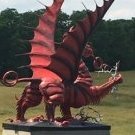
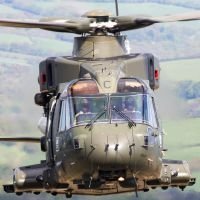
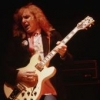



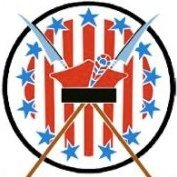
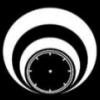
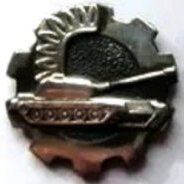
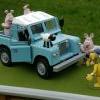


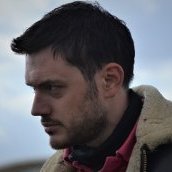


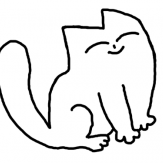


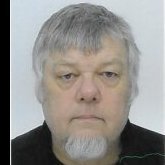

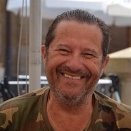

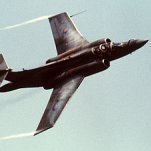


.thumb.jpg.b4a5069fd2c2dd5708ce1694345c5b11.jpg)
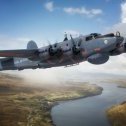
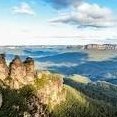
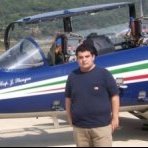
.thumb.jpg.d3635a7ef6507d35f372dd09671fe96f.jpg)

